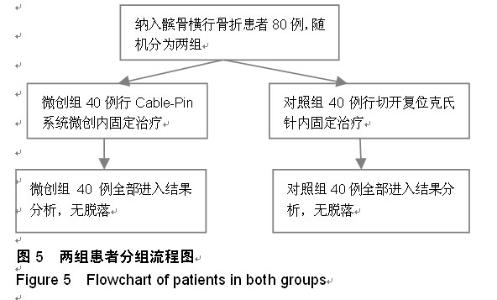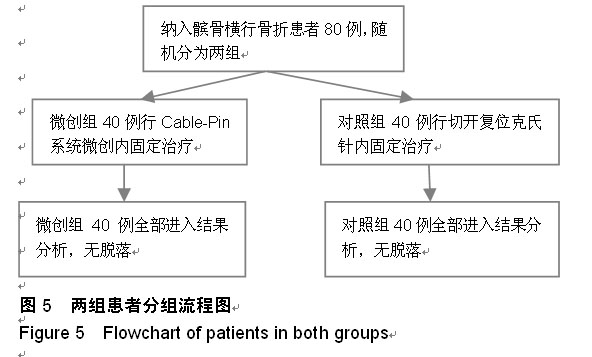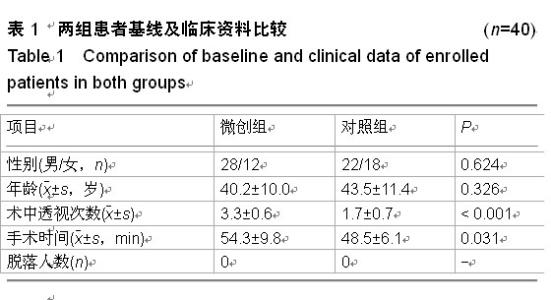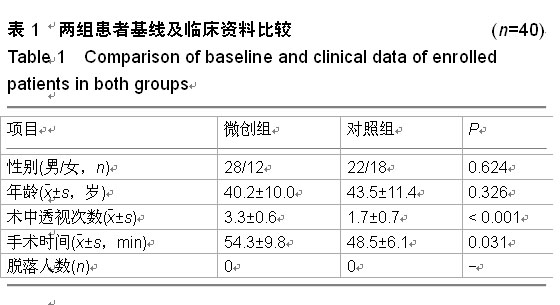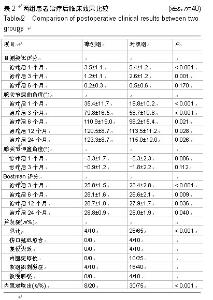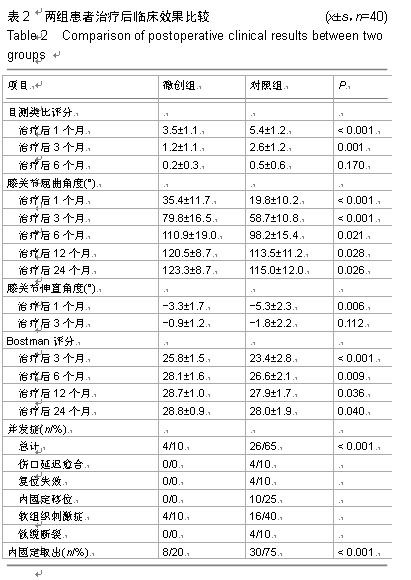| [1] Galla M, Lobenhoffer P. Patella fractures. Chirurg. 2005; 76(10):987-97.
[2] Lowery K, Dearden P, Sherman K, et al. Cadaveric analysis of capsular attachments of the distal femur related to pin and wire placement. Injury. 2015.
[3] Bostrom A. Fracture of the patella. A study of 422 patellar fractures. Acta Orthop Scand Suppl.1972;143:1-80.
[4] Yoo JD, Kim NK. Periprosthetic Fractures Following Total Knee Arthroplasty. Knee Surg Relat Res. 2015;27(1):1-9.
[5] Larangeira JA, Bellenzier L, da Silva Rigo V, et al. Vertical Open Patella Fracture, Treatment, Rehabilitation and the Moment to Fixation. J Clin Med Res. 2015;7(2): 129.
[6] 王维山,孙建华,李宽新,等.髌骨骨折不同治疗方法的临床疗效比较及治疗策略分析[J].实用医学杂志,2013,28(18): 3044- 3046.
[7] Weber MJ, Janecki CJ, McLeod P, et al. Efficacy of various forms of fixation of transverse fractures of the patella. J Bone Joint Surg.1980;62(2):215.
[8] Lotke PA, Ecker ML. Transverse fractures of the patella. Clin Orthop Relat Res. 1981 ;(158):180.
[9] Catalano JB, Iannacone WM, Marczyk S, et al. Open fractures of the patella: long-term functional outcome. J Trauma. 1995;39(3):439.
[10] Egol K, Howard D, Monroy A, et al. Patella Fracture Fixation with Suture and Wire: you Reap what you Sew. Iowa Orthop J. 2014;34:63.
[11] Carpenter JE, Kasman RA, Patel N, et al. Biomechanical evaluation of current patella fracture fixation techniques. J Orthop Trauma.1997;11(5):351.
[12] 张晓明,王华,徐忠世,等.微创克氏针张力带治疗髌骨骨折[J].中国矫形外科杂志,2007,15(22):1701-1703.
[13] Rathi A, Swamy MK, Prasantha I, et al. Percutaneous tension band wiring for patellar fractures. J Orthop Surg (Hong Kong). 2012;20(2):166-169.
[14] Appel MH, Seigel H. Treatment of transverse fractures of the patella by arthroscopic percutaneous pinning. Arthroscopy. 1993; 9(1):119.
[15] Smith ST, Cramer KE, Karges DE, et al. Early complications in the operative treatment of patella fractures. J Orthop Trauma.1997;11(3):183.
[16] Luna-Pizarro D, Amato D, Arellano F, et al. Comparison of a technique using a new percutaneous osteosynthesis device with conventional open surgery for displaced patella fractures in a randomized controlled trial. J Orthop Trauma. 2006; 20(8): 529.
[17] 张涛,李海峰,何勍,等.髌骨固定针与克氏针张力带治疗髌骨骨折的病例对照研究[J].中国骨伤,2013,26(6):453-456.
[18] Burvant JG, Thomas KA, Alexander R, et al. Evaluation of methods of internal fixation of transverse patella fractures: a biomechanical study. J Orthop Trauma.1994;8(2):147.
[19] Cekin T, Tukenmez M, Tezeren G. [Comparison of three fixation methods in transverse fractures of the patella in a calf model]. Acta Orthop Trauma. 2006;40(3):248.
[20] Curtis MJ. Internal fixation for fractures of the patella. A comparison of two methods. J Bone Joint Surg. 1990;72(2): 280.
[21] Mao N, Ni H, Ding W, et al. Surgical treatment of transverse patella fractures by the cable pin system with a minimally invasive technique. J Trauma Acute Care Surg. 2012;72(4): 1056-1061.
[22] Mao N, Liu D, Ni H, et al. Comparison of the cable pin system with conventional open surgery for transverse patella fractures. Clin Orthop Relat Res. 2013;471(7):2361-2366.
[23] Liu QH, Fu ZG, Zhou JL, et al. Randomized prospective study of olecranon fracture fixation: cable pin system versus tension band wiring. J Int Med Res. 2012;40(3): 1055-1066.
[24] 宋炜中,丁志宏,杨铁毅.Cable-Pin系统与张力带固定治疗髌骨骨折的比较[J].复旦学报,2010,37(6):672-675.
[25] Sayum Filho J, Lenza M, Teixeira de Carvalho R, et al. Interventions for treating fractures of the patella in adults. The Cochrane Library, 2012.
[26] Fink C, Veselko M, Herbort M,et al. Minimally invasive reconstruction of the medial patellofemoral ligament using quadriceps tendon. Arthrosc Tech. 2014;3(3): e325-329.
[27] Kim MB, Lee YH, Shin WC, et al. Locked tension band wiring using ring pins for patellar fractures: a method of minimising implant migration. Arch Orthop Trauma Surg. 2014;134(11): 1537-1543.
[28] El-Sayed AM, Ragab RK. Arthroscopic-assisted reduction and stabilization of transverse fractures of the patella. Knee. 2009;16(1):54.
[29] Gardner MJ, Griffith MH, Lawrence BD, et al. Complete exposure of the articular surface for fixation of patellar fractures. J Orthop Trauma. 2005;19(2): 118.
[30] Turgut A, Gunal I, Acar S, et al. Arthroscopic-assisted percutaneous stabilization of patellar fractures. Clin Orthop Relat Res. 2001;(389): 57.
[31] 颜登鲁.微创张力带固定法治疗髌骨骨折的研究现状[J].中国临床解剖学杂志,2004,22(4):446-448.
[32] 李健,颜登鲁,高粱斌,等.微创张力带固定治疗横断型髌骨骨折[J].中华创伤骨科杂志,2006,8(6):529-531.
[33] Ma HJ, Shan L, Zhou JL, et al. [Case-control study on cable-pin system in the treatment of olecranon fractures]. Zhongguo gu shang. 2012; 25(5): 393-396.
[34] Matar HE, Ali AA, Buckley S, et al. Surgical interventions for treating fractures of the olecranon in adults. The Cochrane Library, 2014.
[35] Zeng BF. Minimally invasive surgery in fracture management. Chin Med J. 2008;121(15): 1349.
[36] Wardak MI, Siawash AR, Hayda R. Fixation of patella fractures with a minimally invasive tensioned wire method: compressive external fixation. J Trauma Acute Care Surg. 2012;72(5): 1393.
[37] Chiang CC, Chen WM, Jeff Lin CF, et al. Comparison of a minimally invasive technique with open tension band wiring for displaced transverse patellar fractures. J Chin Med Assoc. 2011;74(7):316-321.
[38] Hung LK, Chan KM, Chow YN, et al. Fractured patella: operative treatment using the tension band principle. Injury. 1985;16(5): 343.
[39] Sillanpää PJ, Salonen E, Pihlajamäki H, et al. Medial patellofemoral ligament avulsion injury at the patella: classification and clinical outcome. Knee Surg Sports Traumatol Arthrosc. 2014;22(10): 2414-2418.
[40] Hoshino CM, Tran W, Tiberi JV, et al. Complications following tension-band fixation of patellar fractures with cannulated screws compared with Kirschner wires. J Bone Joint Surg. 2013;95(7): 653-659.
|
